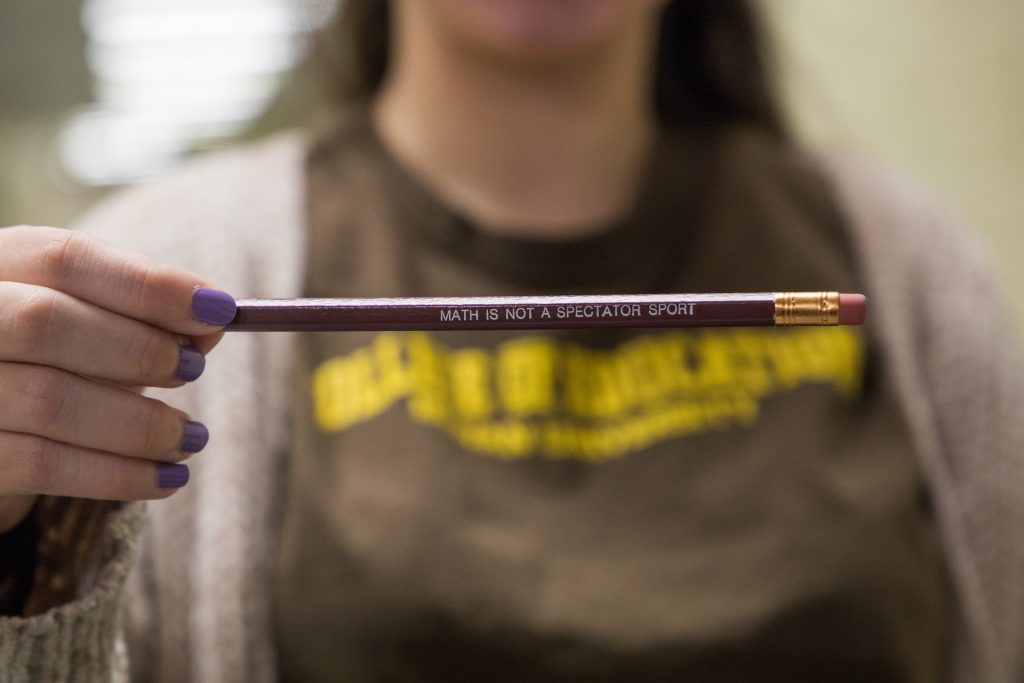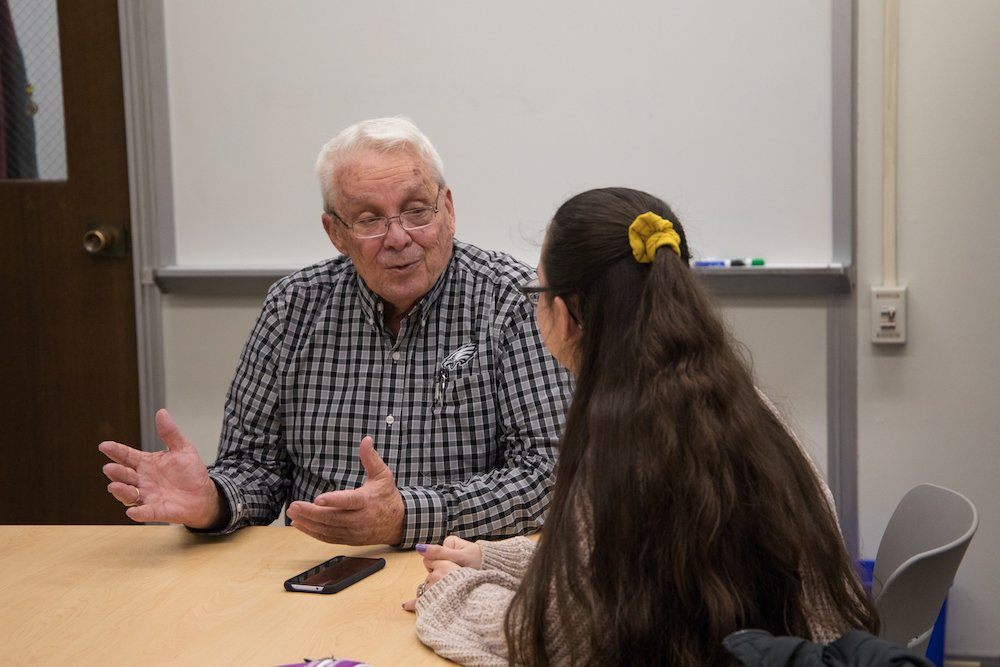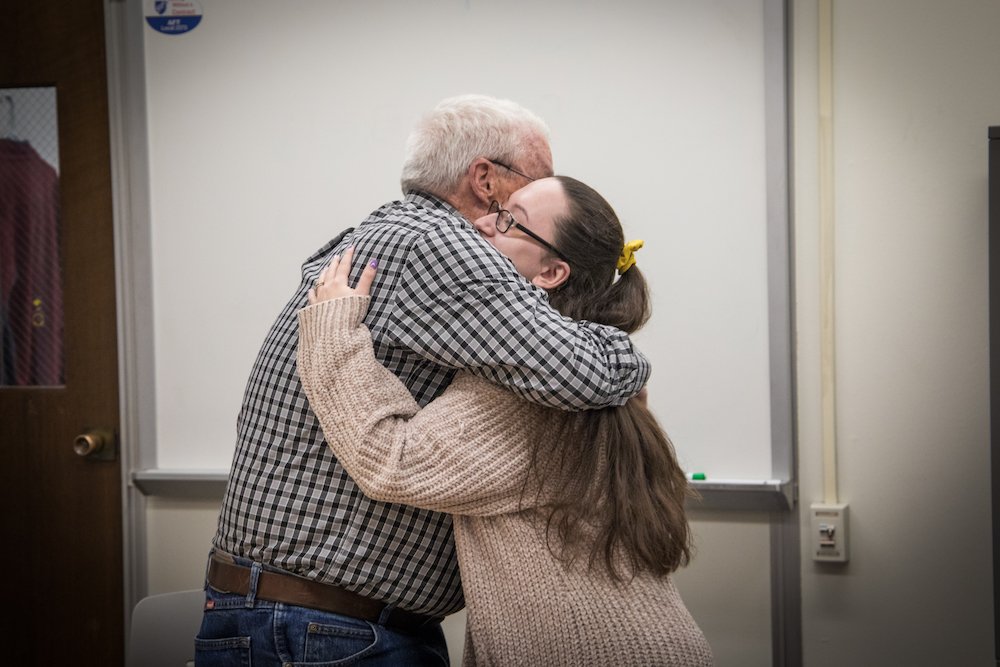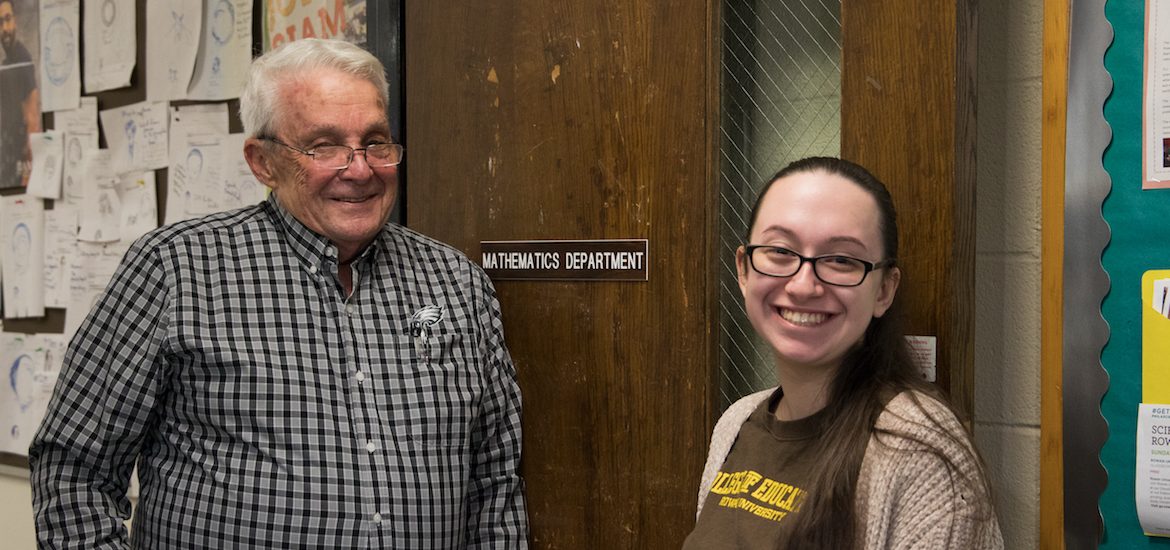Meet Adriana Simiriglio, a junior Elementary Education major specializing in Mathematics from Gloucester County. Today she shares how her mathematics professor changed her outlook on teaching and learning that ultimately made her a better problem-solver and soon-to-be teacher.

I’m an education major. This means that I will relearn nearly 12 years of schooling, but this time from another perspective.
I was a little hesitant to take my math class my first year. I was good at math, but I was never the strongest at it, and I was afraid that college math would be at least 50 times harder than what I experienced during my regular school years.
It wasn’t.
I walked into the classroom to meet my bright-eyed professor, William Smith, who welcomed me with open arms and was already practicing everyone’s names. He placed us sitting in different groups, where I was able to meet three other education majors who were scared of math just like me.
He started out by handing us all a pencil because he knew a lot of us would ultimately forget. However, it was what he had inscribed on the pencil that got my mind reeling.
“Math is not a spectator sport.”

Professor Smith began to explain what this math class really was. We had to relearn all of math, starting with regular addition, subtraction, multiplication, and division, and then next semester, we’ll continue with fractions and probability. I was shocked. I had to relearn addition and subtraction? That was a kindergarten skill that I had already mastered many eons ago.
I thought I knew it all. I was wrong.
To help support us, Professor Smith made his own textbook and made it available in a PDF form. He explained he would never to assign too much homework because assigning book problems that don’t give us an answer and show us how to solve the problem are useless because we will never learn that way.
As soon as he was done explaining, he put addition problems on the board. Simple addition problems, but this started the epiphany of why math isn’t as scary as it looks.
The problems were easy, 2+2, 5+5, 20+10. When he asked us to explain our answer, we just simply said that “we knew it.” There was no explanation.
That’s the problem. We are never forced to explain. We are robots to the common knowledge, but we don’t know why or how we got the answers to the problems.
Now for the big guns, 367+83. Everyone was amused by what we thought was humor. So, we grabbed our papers, carried and borrowed with confidence, and all came up with the same answer. When we were asked why, it was just because “we were taught that way.” We had absolutely no knowledge of why we did math the way we did math.

This is when he explained the pinnacle of what math truly is:
We are forced in our classes to memorize formulas, patterns, ways of solving problems the quickest. We are never taught to look at the problem, become problem solvers, and think of our own way to solve it. He asked how many of us were told by our teachers “not to use your way,” or “don’t use your parents way, just stick to this” even though we were getting the right answers. We were forced to copy the work of our teachers, and expected to get the right answers. All of us raised our hands. He told us he is going to guide us through this class, but he is not going to teach it, we are.
We are going to explain our thinking of answers to the class, share our own ways of solving the problem so others can try, and most importantly: scrap all formulas and shortcuts because they will never show you what math truly is. No more carrying and borrowing, no more solving from the right to the left. He taught us so many different ways to add, subtract, multiply, and divide so we could find what works best for us. Tests told us on every question to use the method that works best for us.
Throughout the semester, he had us volunteer to lead the class lessons, and as I started to feel comfortable and confident with my own work, I took strides and led the class multiple times, even within the first week of school. He told us that if we are going to be teachers, we have to get up in front of the class and explain something that is our biggest fear to our peers first.
But why? Why did we feel confident? The answer is simple: We were allowed to let our brains work out and process problems in a way that we could figure out. We weren’t force-fed information that we had to mimic, but instead, we were given full range to expand our minds and understand what we were learning.

So yes, math is not a spectator sport. It requires effort, thinking, and problem-solving skills. But when you open your mind to the different possibilities that math has to offer, it is only the beginning of what you can accomplish. Not only did this class change my perspective on math as a future teacher, but it made me feel confident instead of belittled when I couldn’t solve a problem, it made me feel empowered that I could solve the problems the way that I saw fit, and most importantly: this class taught me that math isn’t something to be afraid of. It is only yourself that can make you afraid, but when you have the right teacher, math can be as easy as 3.14.
Interested in education? Learn more about our majors.
Story by:
Adriana Simiriglio, junior elementary education major



